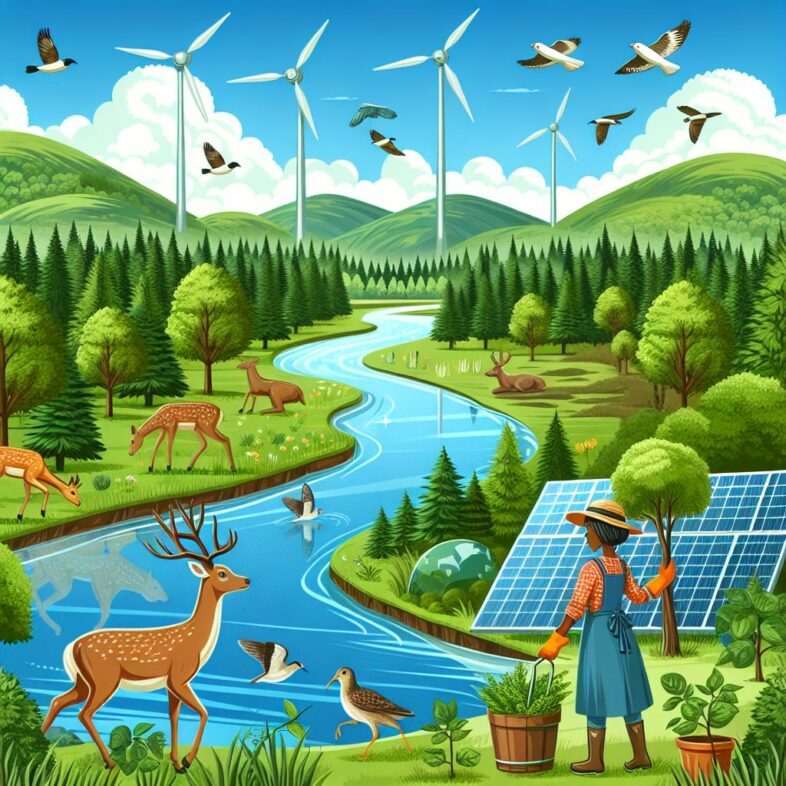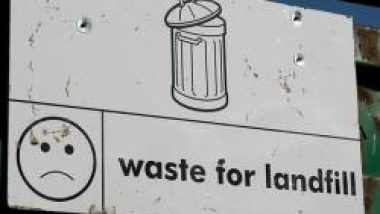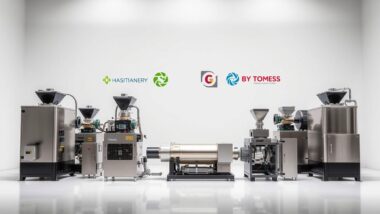Key Takeaways
- Biological recycling, or biorecycling, uses microorganisms to break down plastics into reusable resources, reducing landfill waste.
- Unlike mechanical recycling, biorecycling ensures plastics can be reused without losing their properties, promoting a circular economy.
- Composting, anaerobic degradation, and enzymatic recycling are key biorecycling techniques that convert waste into valuable resources like biogas and compost.
- Biodegradable plastics are ideal for biorecycling, though challenges remain for non-degradable plastics.
- Biorecycling reduces greenhouse gas emissions, conserves energy, and can create jobs in green industries.
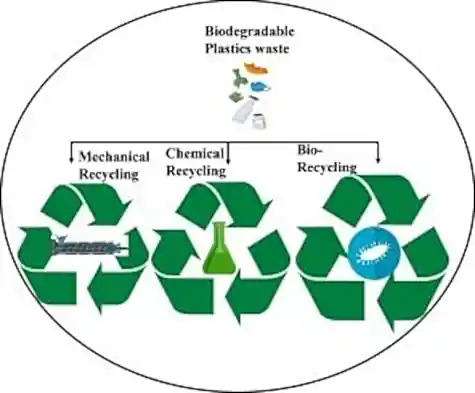
“bio-recycling of biodegradable plastics …” from www.sciencedirect.com and used with no modifications.
The Biological Recycling Process & Biorecycling Benefits Explained
In our modern world, plastic waste has become a significant environmental challenge. It's not just the visible litter that concerns us, but also the long-lasting impact on our ecosystems. Biological recycling, or biorecycling, offers a promising solution by transforming plastic waste into valuable resources through natural processes. This article will delve into the intricacies of biorecycling, highlighting its benefits and the steps we can take to support this sustainable practice.
Plastic Waste and Environmental Impact
Plastic waste is everywhere. From the bottles we discard to the packaging that wraps our groceries, it accumulates rapidly. Unfortunately, much of this waste ends up in landfills or oceans, causing harm to wildlife and leaching toxins into the environment. As plastic degrades slowly, it contributes significantly to pollution, with some estimates suggesting that over 8 million tons of plastic enter our oceans each year.
Decline of Natural Resources and Pollution Concerns
The production of plastics is resource-intensive, relying heavily on fossil fuels. This not only depletes our natural resources but also increases carbon emissions. As demand for plastic continues to grow, so does the strain on our planet's resources. Reducing plastic waste and finding sustainable recycling methods are crucial steps in addressing these concerns.
Greenhouse Gases and Global Warming
Plastics contribute to greenhouse gas emissions at every stage of their lifecycle, from production to disposal. When plastics are incinerated, they release harmful gases, contributing to global warming. Moreover, the accumulation of plastics in landfills generates methane, a potent greenhouse gas. Therefore, finding effective ways to recycle plastics can help mitigate climate change.
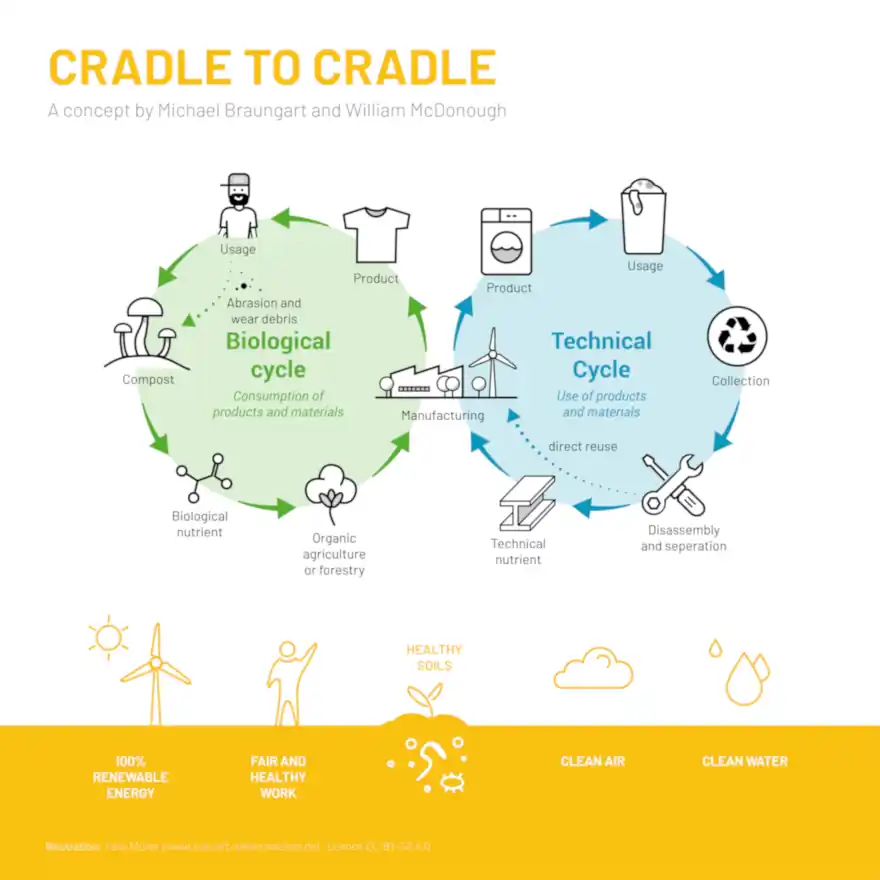
“Cradle-to-cradle design – Wikipedia” from en.wikipedia.org and used with no modifications.
What is Biological Recycling?
Overview of Biological Recycling
Biological recycling, or biorecycling, is a process that uses natural organisms to break down plastics into reusable materials. Unlike traditional recycling methods, which often involve mechanical or chemical processes, biorecycling relies on microorganisms such as bacteria and fungi. These organisms metabolize plastics, converting them into substances that can be reintegrated into the environment or used as raw materials.
Role of Microorganisms in Degradation
Microorganisms play a crucial role in Mechanical Recycling. They possess enzymes that can break down complex plastic polymers into simpler compounds. This process not only reduces plastic waste but also produces byproducts like compost or biogas, which can be harnessed for energy. By leveraging the natural abilities of these microorganisms, we can turn waste into wealth.
For instance, certain bacteria can digest polylactic acid (PLA), a common biodegradable plastic, breaking it down into lactic acid. This lactic acid can then be used to produce new plastics, closing the loop and supporting a circular economy.
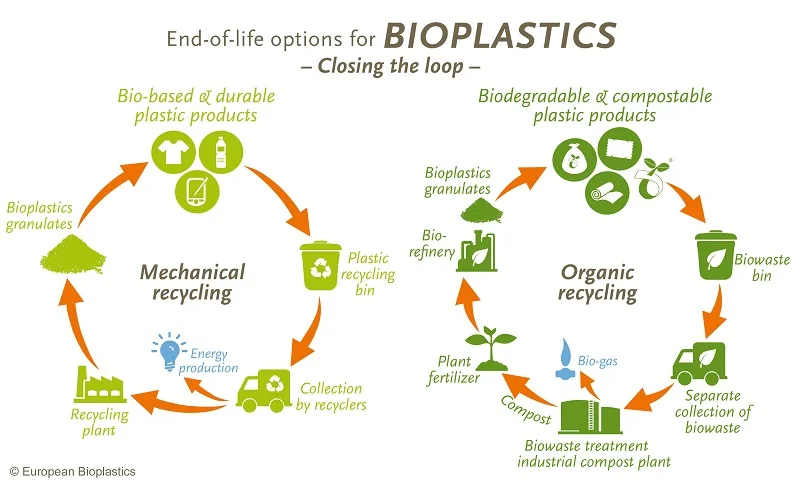
“How to dispose of bio-based plastics …” from www.allthings.bio and used with no modifications.
Difference from Mechanical Recycling
Mechanical recycling involves shredding, melting, and reforming plastics into new products. While effective, this method can degrade the quality of plastics over time, limiting their reuse. In contrast, biorecycling maintains the integrity of plastic materials, allowing them to be reused indefinitely without losing their properties. This not only conserves resources but also reduces the environmental footprint of plastic production.
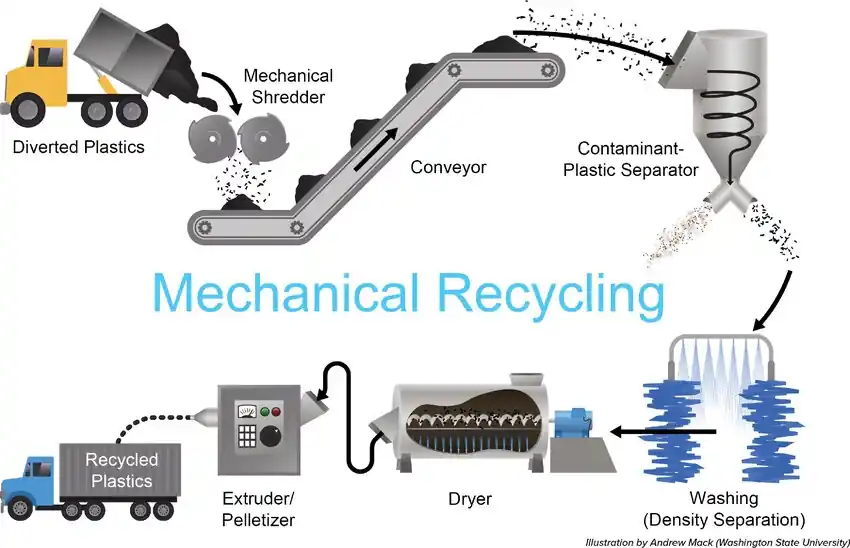
“mechanical plastic recycling process …” from www.researchgate.net and used with no modifications.
Types of Biorecycling Techniques
Composting and Its Benefits
Composting is a well-known biorecycling technique that involves the breakdown of organic waste by microorganisms. When applied to biodegradable plastics, composting transforms them into nutrient-rich compost, which can enhance soil fertility. This process not only reduces landfill waste but also supports sustainable agriculture by providing natural fertilizers.
Composting is particularly effective for plastics labeled as “compostable,” which are designed to break down under specific conditions. By composting these materials, we can divert waste from landfills and contribute to a healthier planet.
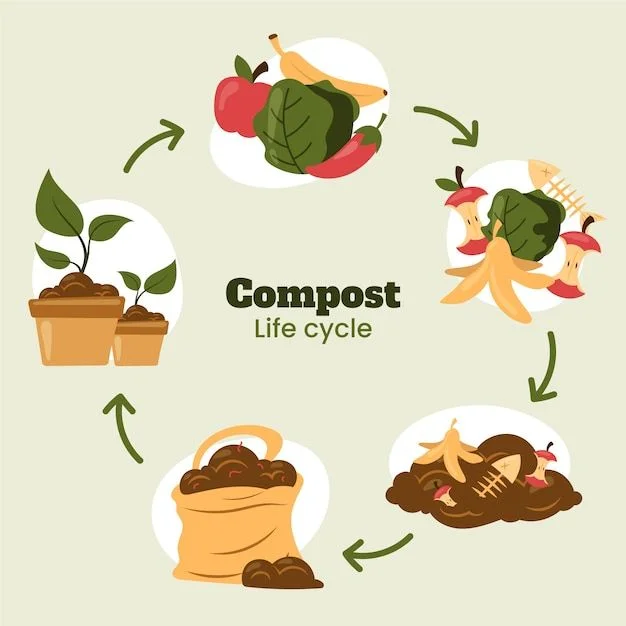
“6 Steps to Make Compost from Kitchen Waste” from releaf.in and used with no modifications.
Anaerobic Degradation and Biogas Production
Anaerobic degradation is another powerful biorecycling technique. This process involves breaking down biodegradable materials in the absence of oxygen. During anaerobic digestion, microorganisms decompose organic waste, including certain plastics, producing biogas as a byproduct. Biogas, rich in methane, can be used as a renewable energy source, providing heat or electricity.
This method not only helps more effectively but also contributes to energy production. Anaerobic digestion facilities can be integrated with existing waste management systems, enhancing their efficiency and sustainability. By converting waste into energy, we reduce our reliance on fossil fuels, contributing to a cleaner and greener environment.
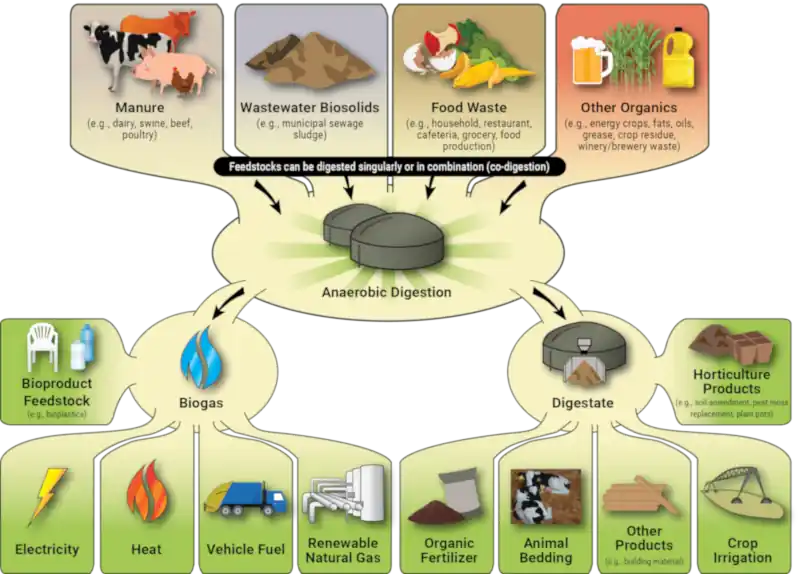
“How Does Anaerobic Digestion Work? | US EPA” from www.epa.gov and used with no modifications.
Enzymatic Recycling: A Sustainable Option
Enzymatic recycling stands out as an innovative and sustainable biorecycling approach. Unlike other methods, it uses specific enzymes to break down plastics at a molecular level. These enzymes target the bonds in plastic polymers, converting them into their original monomers. This process allows for the complete recovery of raw materials, which can be used to create new plastics.
Enzymatic recycling is particularly advantageous because it operates at lower temperatures compared to traditional recycling methods, saving energy and reducing emissions. It also offers the potential to recycle mixed or contaminated plastics, which are often challenging to process through conventional means. As research advances, enzymatic recycling could revolutionize the way we handle plastic waste.
Plastics Suitable for Biorecycling
Not all plastics are suitable for biorecycling. The effectiveness of biological recycling depends largely on the type of plastic and its biodegradability. Generally, plastics that are labeled as biodegradable or compostable are ideal candidates for biorecycling processes. These materials are designed to break down more easily in natural environments, facilitating their conversion into valuable resources.
Biodegradable plastics, such as PLA and polyhydroxyalkanoates (PHA), are derived from renewable sources like corn starch or sugarcane. They are engineered to decompose through microbial action, leaving behind no toxic residues. These plastics are perfect for composting and anaerobic digestion, offering a sustainable alternative to traditional petroleum-based plastics.
However, it's important to note that biodegradable does not mean the same as compostable. While all compostable plastics are biodegradable, not all biodegradable plastics meet the standards required for composting. Compostable plastics must break down within a specific timeframe and environment, producing nutrient-rich compost as a result.
“Biodegradable plastics can break down naturally by the action of micro-organisms, while compostable plastics biodegrade under specific conditions and produce compost.” – AIMPLAS
Biodegradable vs. Compostable Plastics
The distinction between biodegradable and compostable plastics is crucial in understanding their role in biorecycling. Biodegradable plastics can decompose through natural processes, but the time and conditions required can vary widely. Compostable plastics, on the other hand, are designed to break down within a set period, under controlled composting conditions. For those interested in sustainable practices, exploring eco-friendly zero waste kits can be a great way to reduce plastic waste.
For example, a compostable plastic bag might decompose completely in a commercial composting facility within 90 days, turning into compost that enriches the soil. In contrast, a biodegradable plastic might take years to degrade in a landfill, depending on environmental factors. Learn more about achieving zero waste to landfill and its impact on the environment.
Challenges in Recycling Non-Degradable Plastics
Despite the advances in biorecycling, non-degradable plastics pose significant challenges. These materials, often made from petroleum-based compounds, resist microbial degradation and can persist in the environment for centuries. Recycling them through biological methods remains difficult, necessitating alternative strategies.
Research is ongoing to develop enzymes and microorganisms capable of breaking down these stubborn plastics. Additionally, efforts are being made to design new materials that combine the durability of traditional plastics with the biodegradability of newer alternatives. Until these solutions are widely available, reducing the use of non-degradable plastics and improving recycling infrastructure are vital steps.
Environmental and Economic Benefits of Biorecycling
Biorecycling offers numerous benefits for both the environment and the economy. By transforming waste into valuable resources, it reduces the volume of plastics that end up in landfills and oceans, mitigating pollution and protecting ecosystems. Additionally, biorecycling processes like anaerobic digestion and composting contribute to energy production and soil health.
Reduction of Plastic Waste in Landfills
One of the most significant advantages of biorecycling is its ability to reduce plastic waste in landfills. By converting biodegradable plastics into compost or biogas, we can significantly decrease the amount of waste that accumulates in these sites. This not only extends the lifespan of existing landfills but also reduces the need for new ones, preserving natural landscapes.
Moreover, by diverting waste from landfills, biorecycling helps reduce methane emissions, a potent greenhouse gas generated during the decomposition of organic materials in landfills. This contributes to climate change mitigation efforts, aligning with global sustainability goals.
Circular Economy and Resource Efficiency
Biorecycling supports the principles of a circular economy, where materials are continuously reused and recycled, minimizing waste and conserving resources. By breaking down plastics into their basic components, biorecycling enables the creation of new products without the need for virgin materials. This reduces the demand for fossil fuels and other raw resources, promoting sustainability.
The circular economy model not only benefits the environment but also presents economic opportunities. By creating a market for recycled materials and bioproducts, it encourages innovation and investment in green technologies, driving economic growth.
Potential for Job Creation in Green Industries
The shift towards biorecycling and sustainable waste management can stimulate job creation in green industries. As demand for biorecycling facilities and technologies grows, so does the need for skilled workers in fields like environmental science, engineering, and biotechnology.
By investing in biorecycling infrastructure and research, we can create a workforce equipped to tackle environmental challenges, fostering economic resilience and sustainability. This transition not only addresses environmental issues but also provides new career opportunities, contributing to a more sustainable and equitable future.
Challenges and Future of Biorecycling
Despite its potential, biorecycling faces several challenges that must be addressed to realize its full benefits. Technological, economic, and regulatory barriers can hinder the widespread adoption of biorecycling practices. However, with continued research and innovation, these obstacles can be overcome, paving the way for a more sustainable future.
Collaboration between governments, industries, and communities is essential to support the growth of biorecycling. By investing in research, developing supportive policies, and raising awareness about the benefits of biorecycling, we can create a more sustainable world for future generations.
Technological and Economic Barriers
Technological barriers include the need for advanced enzymes and microorganisms capable of breaking down a wider range of plastics. Developing these solutions requires significant research and investment, which can be challenging to secure. For businesses aiming to minimize waste, exploring US zero waste companies can offer insights into sustainable practices.
Economic barriers also play a role, as the initial costs of establishing biorecycling facilities and technologies can be high. However, as demand grows and technologies improve, these costs are expected to decrease, making biorecycling more accessible and cost-effective.
Research and Development Needs
Research and development are crucial for advancing biorecycling technologies. We need to focus on creating more efficient enzymes and microorganisms capable of breaking down a wider range of plastics. Additionally, developing cost-effective and scalable biorecycling processes will make this technology more accessible globally.
Investing in R&D can also lead to innovations that improve the efficiency of existing biorecycling methods, such as optimizing conditions for composting and anaerobic digestion. By fostering collaboration between scientists, industries, and governments, we can accelerate the development of biorecycling technologies and bring them to market faster.
Conclusion: The Path Forward in Biorecycling
The future of biorecycling is promising, offering a sustainable solution to the growing problem of plastic waste. By leveraging the natural abilities of microorganisms, we can transform waste into valuable resources, reduce pollution, and conserve our planet's resources. However, achieving this vision requires concerted efforts from all stakeholders, including governments, industries, and individuals.
Education and awareness are key to driving change. By informing the public about the benefits of biorecycling and how they can contribute, we can foster a culture of sustainability and responsibility. Encouraging businesses to adopt biorecycling practices and supporting policies that promote sustainable waste management are also vital steps.
Ultimately, the success of biorecycling depends on our collective commitment to sustainability. By embracing innovative technologies and sustainable practices, we can create a cleaner, greener future for generations to come.
“Biorecycling not only helps manage waste effectively but also contributes to energy production. By converting waste into energy, we reduce our reliance on fossil fuels, contributing to a cleaner and greener environment.” – AIMPLAS
Summary of Key Points
Biorecycling is a promising solution to plastic waste, using natural processes to transform waste into resources. Techniques like composting, anaerobic digestion, and enzymatic recycling reduce landfill waste and support a circular economy. Biodegradable plastics are ideal for biorecycling, though challenges remain for non-degradable plastics. The environmental benefits include reduced pollution and greenhouse gas emissions, while economic benefits include job creation in green industries. Continued research and collaboration are essential to overcoming barriers and advancing biorecycling technologies.
Recommendations for Supporting Biorecycling
To support biorecycling, individuals can reduce plastic use, participate in recycling programs, and advocate for sustainable practices. Governments and industries should invest in R&D, implement supportive policies, and promote public awareness. By working together, we can create a sustainable waste management system that benefits the environment and the economy.
Frequently Asked Questions (FAQ)
Biorecycling can be complex, and many people have questions about how it works and its benefits. Here are some common questions and answers to help clarify this innovative process. For more insights, you can explore how reverse vending machines work and their benefits.
What types of plastics can be biologically recycled?
Biodegradable and compostable plastics, such as polylactic acid (PLA) and polyhydroxyalkanoates (PHA), are suitable for biorecycling. These plastics are designed to break down through microbial action, making them ideal for composting and anaerobic digestion. However, non-degradable plastics pose challenges and require alternative recycling methods.
How does enzymatic recycling differ from other methods?
Enzymatic recycling uses specific enzymes to break down plastics at a molecular level, converting them into their original monomers. This process operates at lower temperatures, saving energy and reducing emissions. It offers the potential to recycle mixed or contaminated plastics, which are often difficult to process through conventional means.
Unlike mechanical recycling, which can degrade the quality of plastics over time, enzymatic recycling maintains the integrity of plastic materials, allowing them to be reused without losing their properties. This makes it a sustainable and efficient option for recycling plastics, contributing to efforts like achieving zero waste to landfill.
What are the main benefits of biorecycling for the environment?
Biorecycling reduces the volume of plastic waste in landfills and oceans, mitigating pollution and protecting ecosystems. It also reduces greenhouse gas emissions by diverting waste from landfills and producing renewable energy through anaerobic digestion. Additionally, biorecycling supports a circular economy by enabling the continuous reuse of materials, conserving resources, and reducing the demand for fossil fuels.
By transforming waste into valuable resources, biorecycling contributes to a cleaner and more sustainable environment, aligning with global efforts to combat climate change and promote sustainability.
What are the current challenges facing the biorecycling industry?
The biorecycling industry faces several challenges, including technological barriers, such as the need for advanced enzymes and microorganisms capable of breaking down a wider range of plastics. Economic barriers, such as the high initial costs of establishing biorecycling facilities and technologies, also pose challenges. Additionally, regulatory and policy frameworks need to support the growth of biorecycling and promote sustainable waste management practices.
Overcoming these challenges requires continued research and collaboration between governments, industries, and communities. By investing in R&D and developing supportive policies, we can advance biorecycling technologies and make them more accessible and cost-effective.
How can individuals contribute to the biorecycling efforts?
Individuals can support biorecycling efforts by reducing their plastic use, participating in recycling programs, and advocating for sustainable practices. By choosing biodegradable or compostable plastics and properly disposing of them in composting facilities, individuals can help divert waste from landfills and support the biorecycling process.
Additionally, individuals can raise awareness about the benefits of biorecycling and encourage businesses and governments to adopt sustainable waste management practices. By working together, we can create a culture of sustainability and responsibility, contributing to a cleaner and greener future for all.



